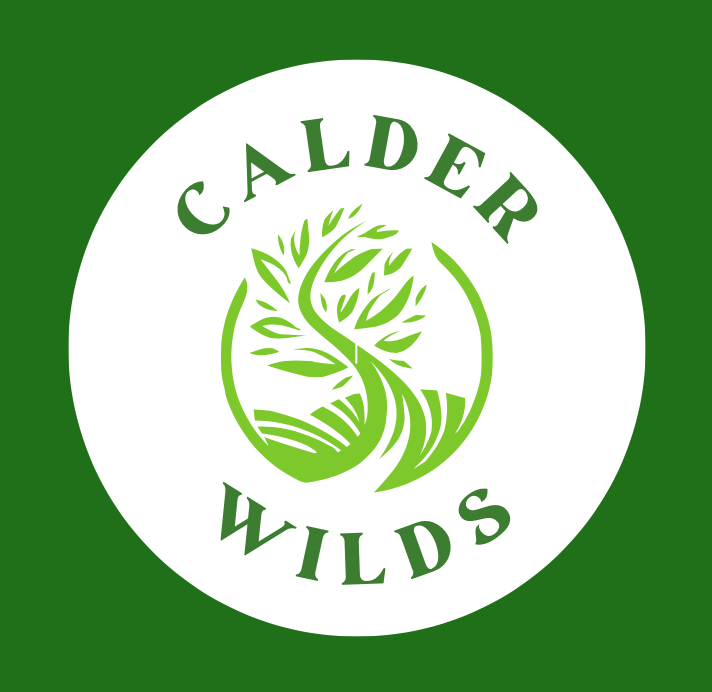Birds
The Calder wilds is a birders paradise! The soundtrack to our days are the beautiful songs of the more than a hundred different species that call this forest-covered hill home. Some of them stay here year round while others migrate through on their way north for the summer and south for the winter.
Our constant summer companions are the barn swallows that move in to our carport and make their nests in the rafters. Their constant chirping and acrobatic swooping to feed on the flying bugs liven up our days and it’s a treat to see the new fledglings leave the nest and make their inaugural flights every few weeks.
Barn Swallow
Hirundo rustica
Ruby-throated Hummingbird
Archilochus colubris
Indigo bunting
Passerina cyanea
Word has also gotten out that we have hung a couple of hummingbird feeders from our awning and we now have dozens of these feisty little winged jet-fighters buzzing around the house during the summer months. Adorable as these tiny birds seem they are ferocious when it comes to defending their spot at the feeders, amicable sharers they rarely are! They do provide hours of entertainment for us and we’re sad to see the last of them fly off down south every September.
Other summer regulars are the bluebirds and tree swallows, who compete to make their nests in the bird boxes around the vegetable garden, the stunningly elegant cedar waxwings, dramatic scarlet tanagers, gregarious gold finches, chatty robins, insistent phoebes and many, many species of the cute yellow tinted warblers.
Tree Swallow
Tachycineta bicolor
Cedar Waxwing
Bombycilla cedrorum
Yellow Warbler
Setophaga petechia
One of the largest birds we see year round is the wild turkey. In the spring the males strut their stuff, tails fanning out and wings bulging, competing for mating rights with the seemingly unimpressed females. Some do win the prize though and come summertime large groups of three to four hens, herding their two dozen or so young poults around, will be a common sight in the open meadows as they criss-cross through feeding on all manner of bugs, seeds and the odd unfortunate grasshopper.
Wild Turkey
Meleagris gallopavo
Great blue heron
Ardea herodias
Red-shouldered hawk
Buteo lineatus
Waterfowl fly in to bathe and fish in the ponds, from the common mallard duck to the festive hooded merganser, the colourful wood duck to the long-legged great blue heron. They don’t stay long but it’s always fun to see them come swooping in for a water landing.
Some birds are seen less but their distinctive calls are a familiar backdrop to our evenings and nights. As the sun sets on a summer’s day we are serenaded with the cheery sound of the whip-poor-will (“lekker wijf, lekker wijf”, as Tante Ria so perfectly described it!) and as we drift off to sleep we may hear the haunting cry of the barred owl or the horse-like call of the screech owl.
Bald eagle
Haliaeetus leucocephalus
Golden eagle
Aquila chrysaetos
Red-tailed hawk
Buteo jamaicensis
The real royalty of the skies are the birds of prey with the majestic bald eagles and striking golden eagles dominating the avian food chain. These magnificent birds are a glorious sight as they soar high in the clouds or swoop low to scoop up unsuspecting prey with their deadly talons. Smaller, but equally dangerous raptors, also hunt in these woods, it’s quite the sight to see a merlin come sweeping in to take out a barn swallow in mid-flight. Red-tailed and red-shouldered hawks are a common sight and the beautiful American kestrel is a feast for the eyes.
It’s an ongoing education trying to identify all our feathered neighbours by sight and song but with his many years of birding experience Steve is a fountain of knowledge and one by one these winged mysteries are becoming familiar friends.
Blue Jay
Cyanocitta cristata
Baltimore oriole
Icterus galbula
American Kestrel
Falco sparverius
American Crow
Corvus brachyrhynchos
Scarlet tanager
Piranga olivacea
Common Raven
Corvus corax
Dark-eyed junco
Junco hyemalis
Hairy woodpecker
Leuconotopicus villosus
Flycatcher
Tyrannidae
White-breasted nuthatch
Sitta carolinensis
Tufted titmouse
Baeolophus bicolor
Black-caopped Chickadee
Poecile atricapillus
Early in 2020, as a fun project, we decided to keep a record of all the birds that we spotted on our property. We have listed them below in the order that we first saw them, starting in March 2020.
Blue bird
Blue Jay
Crow
Junco
Downy woodpecker
Gold finch
Pileated woodpecker
Red-winged blackbird
American Robin
European Starling
White-breasted nuthatch
Canada Goose
Snow goose
Turkey vulture
Mourning Dove
Barred owl
Raven
Red-bellied woodpecker
Mallard duck
Belted kingfisher
Wood duck
Chickadee
Carolina wren
Tufted titmouse
Hooded merganser duck
Merganser duck
Hairy woodpecker
Red-shouldered hawk
Ruffed grouse
Phoebe
Red-tailed hawk
Bald eagle
Mallard duck
Song Sparrow
Wild turkey
Northern flicker
Brown-headed cowbird
Great blue heron
Field sparrow
Cardinal
Cooper’s hawk
Tree swallow
Purple finch
Northern harrier
Golden-crowned kinglet
Hermit thrush
Yellow-bellied sapsucker
Chipping sparrow
Brown creeper
Blue-headed vireo
Winter wren
Rusty blackbird
Broad-winged hawk
Brown thrasher
Eastern towhee
Barn swallow
Whip-poor-will
Killdeer
Yellow-rumped warbler
Black & white warbler
Baltimore oriole
White-crowned sparrow
Yellow warbler
Bobolink
Common grackle
Wood thrush
Black-throated green warbler
Ovenbird
Northern Parula
Ruby-throated hummingbird
Scarlet tanager
Blue & grey gnat catcher
Veery
Rose-breasted grosbeak
Least flycatcher
Blue-winged warbler
Blackburnian warbler
Eastern kingbird
Ruby-crowned kinglet
Chestnut-sided warbler
Palm warbler
American redstart warbler
Black-throated blue warbler
Catbird
Common yellow-throat warbler
Indigo bunting
Magnolia warbler
Bay-breasted warbler
Nashville warbler
Red-eyed vireo
Tennessee warbler
Wood peewee
Green heron
Warbling vireo
Ruff-winged swallow
Cedar waxwing
Hooded warbler
Merlin
Great-crested flycatcher
Spotted sandpiper
Common night hawk
American kestrel
Evening grosbeak
Eastern meadowlark
Golden eagle
Tree sparrow
























